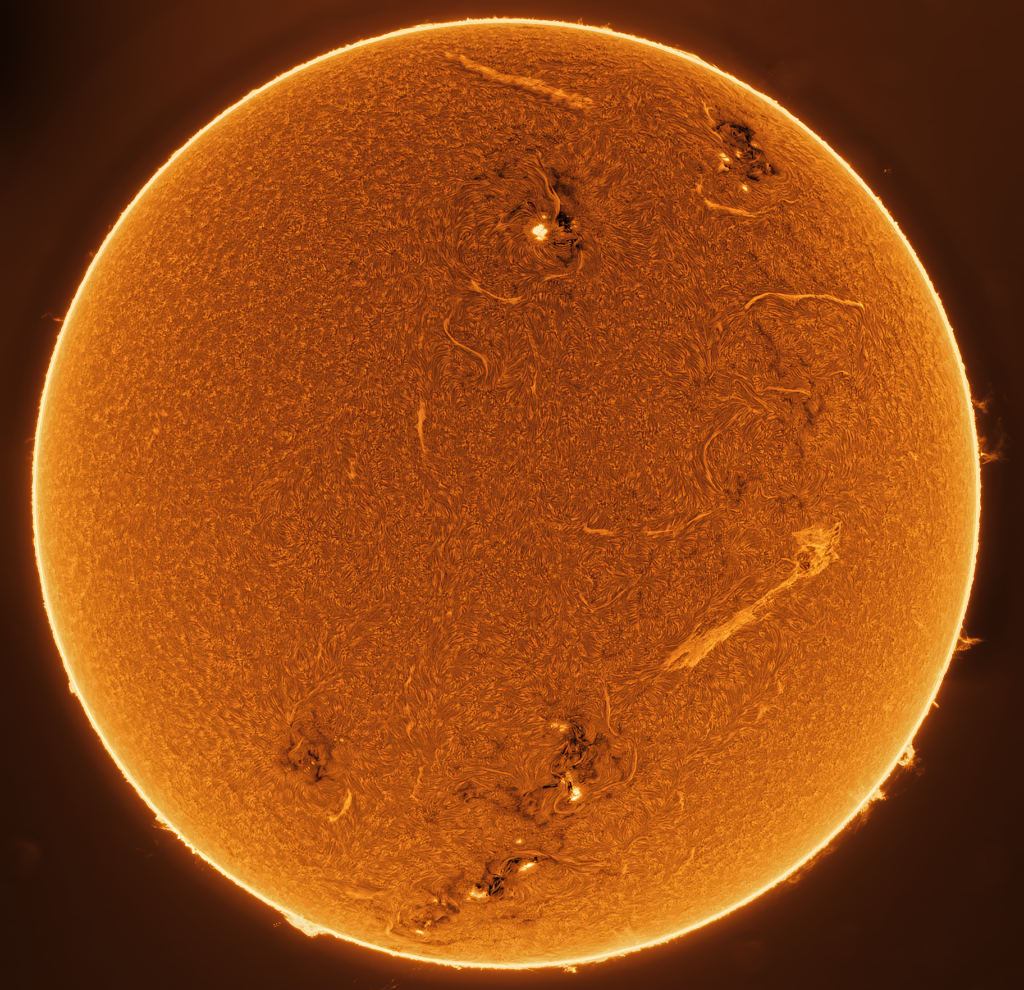Telescopes
This page serves as an introduction to the different types of telescopes as well as the telescopes that LSI has access to through our partnership with Dusk Observatories. You will also find all the materials necessary to do a Magnetism and Solar Prominences lesson in your classroom. Join growing number of educators that have access to Solar and Deep Space Viewing telescopes and bring the wonders of space exploration to your students.
The Refracting Telescope
This telescope is likely what you think of as the traditional telescopes that were first used to get a closer look at the planets in our solar system. Often called Galileo’s telescope, this invention was a significant advancement in observational astronomy, paving the way for the development of more powerful and sophisticated telescopes in the centuries that followed. Using the physics of glass, a refracting telescope bends light through its lenses to bring distant celestial objects into focus. Imagine a long tube with an objective lens at the front. As light passes through the objective lens, it converges to a focal point that aligns with an eyepiece at the other end. If focused properly, it yields a crisp, clear, and magnified image of the subject you’re attempting to view.
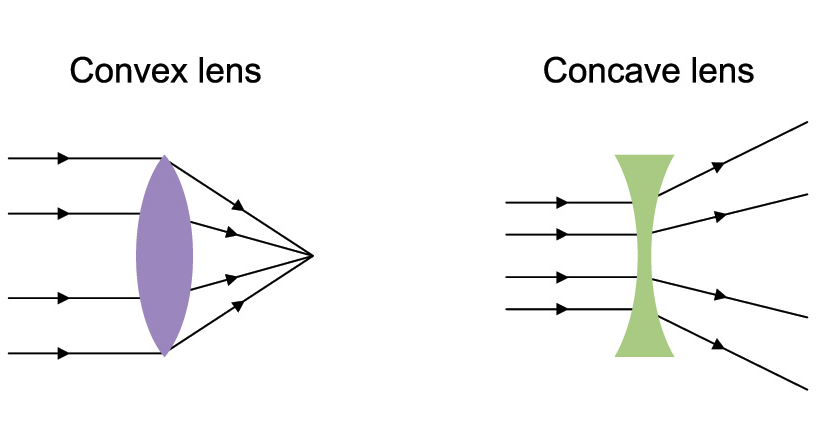
Image Credit: Science News Explorers
The Reflecting Telescope
Sir Isaac Newton wanted to improve this design to see even further. Instead of simply relying on lenses to bend light, he realized that he could achieve better results with a mirror. This still relies on the physics of light, but using reflection rather than refraction, more distant light can be focused through the telescope. Picture a large, curved primary mirror at the base of the telescope, gathering starlight and reflecting it to a secondary mirror. The secondary mirror is placed such that the gathered light is focused at the eyepiece, similar to the refracting telescope. Reflecting telescopes are the most common type seen in modern observatories today. The Dusk Observatories telescopes that we have access to as Limitless Educators fall under this category.
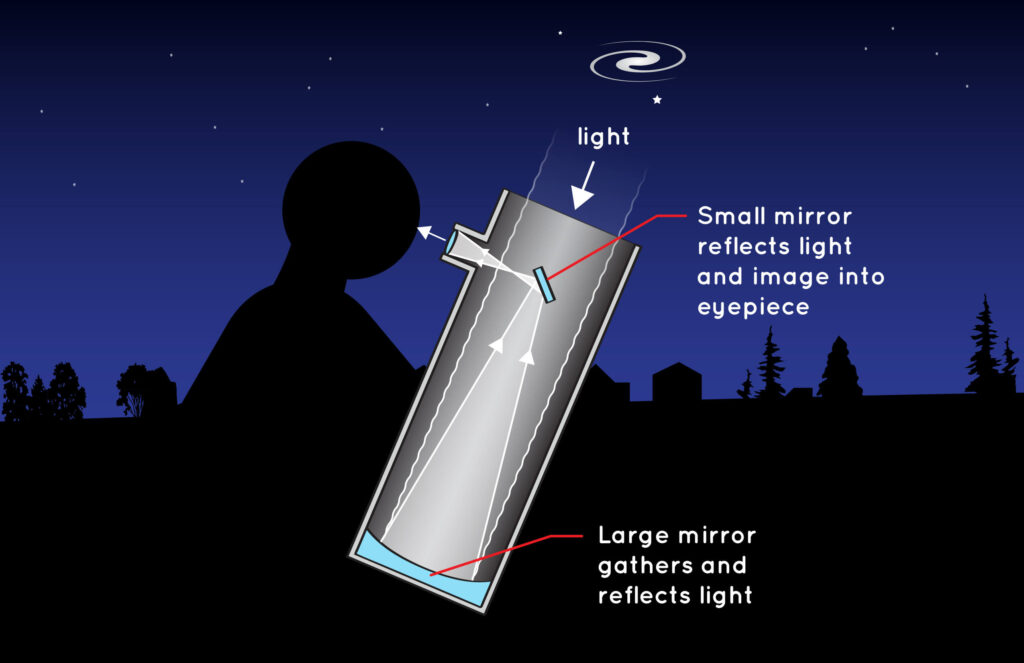
Image Credit: NASA
Both reflecting and refracting telescopes are considered optical telescopes. This is because they use viewable light to view a subject more closely. Using visible light means that you can see the object instantaneously. Other types of telescopes use different wavelengths of light on the electromagnetic spectrum, and while these telescopes can see things that we would never be able to see with our naked eyes, these telescopes require processing with powerful computers for us to create an image that our eyes can comprehend.
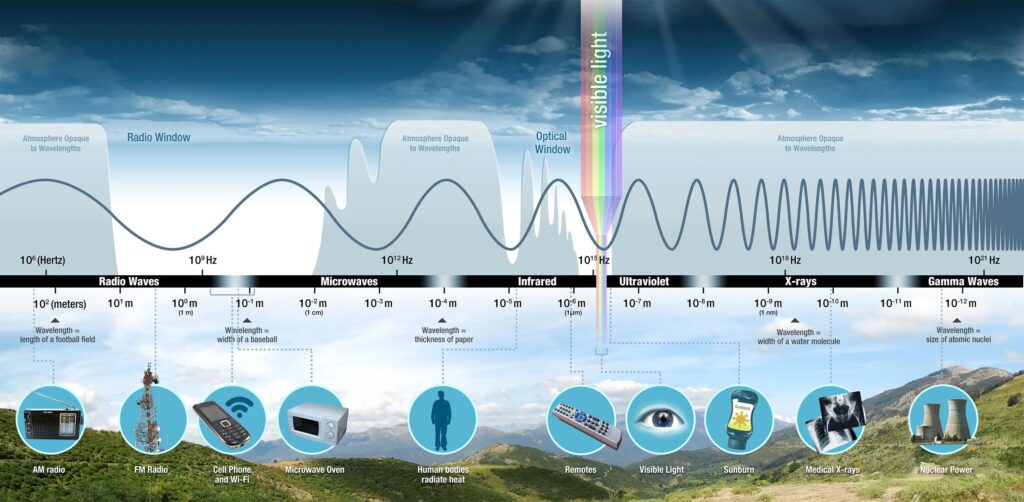
Image Credit: NASA
Solar Viewing
If you look up at a cloudless sky during the day, the only celestial object you’ll be able to see is the sun. It’s probably no surprise that observing anything near the sun is extremely difficult. The sun’s overwhelming brightness and the constant stream of energy and protons it emits make it nearly impossible to see anything nearby. Looking directly at the sun, even with a telescope, is incredibly dangerous – the intense light would flood the eyepiece and potentially damage the retina. However, solar eclipses, which many have witnessed safely, demonstrate that special filters can be used to view the sun directly. So, what happens when you put a similar filter on a telescope? With the filter in place, you can safely look through the telescope’s eyepiece and see the sun in significant detail. You’ll be able to observe features like sunspots, solar prominences, and even the delicate details of the sun’s surface.
If you’ve already used the Dusk Observatories solar telescope, you may recall that one of the items that we provide power to is a filter. It blocks just enough of the high-energy photons being emitted by the sun that we can get a clear image. Using a proper solar filter makes direct observation of the sun safe for the naked eye. However, capturing an image with a specialized solar camera, such as those used at the Dusk Solar Observatory, reveals far more detail than the human eye can discern. If you’d like to learn more information about the specific elements of the Dusk Solar Observatory, you can find it here on the Dusk Telemetry page.
The Radio Telescope
If you’ve ever seen a dish antenna, like the Direct TV satellite dish except bigger than a house, you’ve likely seen a radio telescope. These enormous, concave structures capture radio waves from interstellar sources. Though the waves are far too long for our eyes to see them, the large dish is designed specifically to capture, focus, and convert radio waves into electrical signals that can be interpreted and amplified by computers. Radio telescopes are able to detect radiation from distant galaxies and other cosmic phenomena, even being able to peer through clouds of dust and gas to uncover the secrets within.
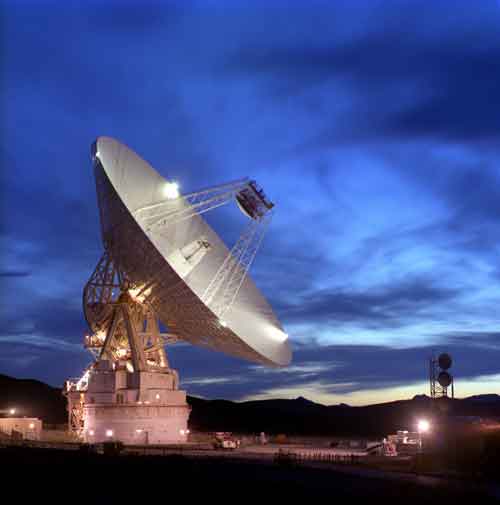
Image Credit: NASA
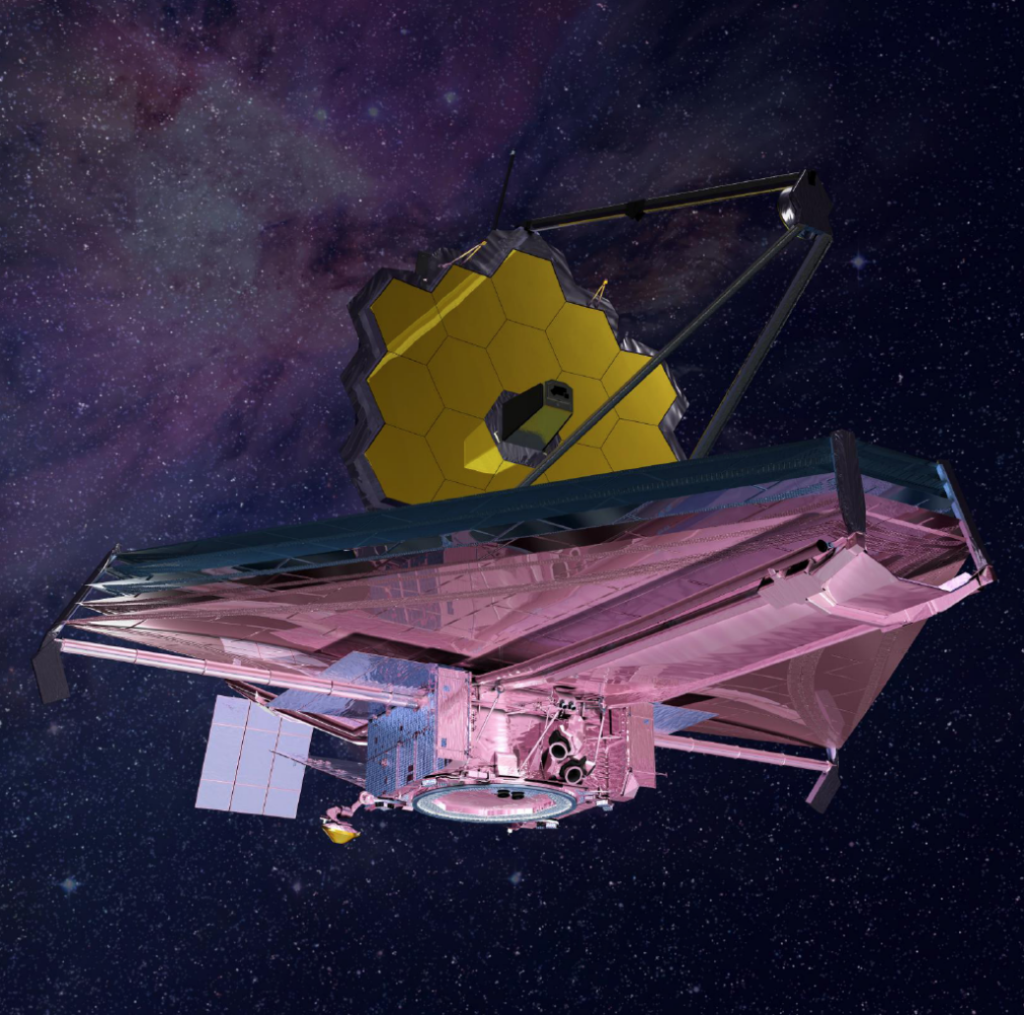
Image Credit: NASA
The Infrared Telescope
Infrared technology is typically used to identify and measure sources of heat. During the height of the COVID-19 pandemic, you likely had your temperature taken with an infrared thermometer because it was able to measure your temperature without actually having to physically contact your body. This technique can be used in the exploration of space as well. An infrared telescope probes space for sources of heat. One challenge of this is isolating the heat of any surrounding objects or even the telescope itself. Therefore, infrared telescopes often require onboard cooling systems to function effectively. However, space-based infrared telescopes, like the James Webb and Spitzer Space Telescopes, also rely heavily on shielding to minimize interference from ambient heat. These powerful telescopes have provided us with incredible views of the universe’s most distant regions.
The Ultraviolet Telescope
Unlike the telescopes we’ve discussed so far, which observe light with longer wavelengths than visible light, ultraviolet telescopes detect light at shorter wavelengths. This distinction is significant. While longer wavelengths often necessitate large sensors to capture the low-frequency waves, ultraviolet, X-ray, and gamma-ray radiation—all short-wavelength electromagnetic radiation—possess much higher frequencies and, consequently, much greater energy. The high energy is why we protect ourselves from ultraviolet radiation with sunscreen and from X-rays with protective gear. Electromagnetic radiation with short wavelengths, ultraviolet, X-ray, and gamma-ray, all have high frequencies, which means that they also carry significant more energy than their counterparts. This is one of the reasons we wear sunscreen to protect us from ultraviolet light and protective gear if we are going to the hospital to be X-rayed.
The Chandra X-ray Observatory is considered NASA’s flagship X-Ray telescope. It is known for its high-resolution images and ability to observe very faint sources. It’s been in operation since 1999 and continues to provide valuable data about the universe.
Ultraviolet telescopes offer a unique window into the behavior of stars, galaxies, other celestial objects, and even gases. They don’t just magnify; they reveal movements and characteristics that are invisible to other types of telescopes.
The X-ray and Gamma-ray Telescopes
Rounding out our team of telescopes are the X-ray and gamma-ray telescopes. Seeing even shorter wavelengths of the electromagnetic spectrum, these telescopes see the most energetic activity in our universe. Using these, you can see the very fast moving particles and radiation emitted by black holes and supernova remnants. These telescopes are also typically space-based to remove the obstacles within our atmosphere and grant us the cleanest possible signal of these amazing celestial events.
The video below provides more information about the different types of telescopes and how they work.
Dusk Observatories Telescopes
Dusk Observatories has one solar viewing and two night sky viewing telescopes that are specifically design to give us real-time views of celestial objects. They are all optical telescopes, which means that use lenses and mirrors to focus light into a sensor through which we can see. There are other types of telescopes, like radio or infrared telescopes, that can provide different information that must be processed to create a visual image, but because we want to be able to see live images without any post-processing, optical telescopes were the best choice for these observatories.
Solar Observatory
The solar observatory contains one telescope that is optimized to capture light from the sun. In fact, if you attempt to view anything other than the sun with this telescope, the camera will return a black image as there is nothing else bright enough to get through the telescope’s filter.
Because of the simplicity and specialization of this telescope and its filter, it is a relatively affordable observatory.
Learn more about the solar observatory here.
Deep Space Observatory
The deep space observatory has two telescopes with different cameras that allow different viewing experiences. The larger, more powerful telescope is best for zooming closer to the subject and seeing more detail, however, it is so sensitive that even a slight breeze may impact your images.
The smaller telescope has a full color camera that allows you to see the amazing variety in a nebula or galaxy, however the depth of the image will not care to the larger deep space telescope.
Learn more about the deep space observatory here.
LIMITLESS OUTREACH
We are excited to offer a wide range of hands-on STEM learning experiences or scientific presentations for your organization! Submit an inquiry for review and pricing.
Educator Professional Development
- ½ day, full day, or multi-day workshops
- Virtual or in-person
- United States and international options
Scientific Presentations
LSI is happy to review inquiries for science topics related to space technologies and power and propulsion systems. Presentations are not guaranteed and is based on the availability of staff.
- K-12 Schools/Educators
- University
- General public
- Scientific Community
Community Events
Have a STEM event in your area? Submit an inquiry to see if a Limitless Educator or Limitless Education can help support!
Limitless
Educators
It is our goal to inspire and educate the next generation to travel beyond our solar system and support the research and development of enabling technologies. The mission of the Limitless Educator Program is to inspire innovative educators to teach beyond the general curriculum. Limitless Educators engage in unique virtual guest speaker opportunities from scientists conducting research in the realm of advanced power and propulsion systems. We also offer our educators the opportunity to attend the Limitless Space Educator Institute, which immerses participants in extraordinary professional development experiences and gives these rock star teachers the time to work together to design new and innovative lesson plans tied to interstellar exploration. We are thrilled with the cohort of Limitless educators from around the world who have integrity, an out-of-this-world imagination, and the courage to try new things in the classroom!
Meet the 2023 class of Limitless Educators!

Limitless Educator Induction Ceremony Gallery

LIMITLESS LAB BOOSTER PROGRAM
The Limitless Education Lab Booster is designed to help Educators and educational organizations, both in the United States and internationally, acquire additional resources to support student learning in STEM. Educators that are recipients of a Lab Booster grant clearly communicate their pursuit of innovative methods that will inspire and educate the next generation of explorers. The Limitless Space Institute will designate Stage I Lab Booster awards that can range from $500 to $5000 depending on the need and scope of the proposal.
Lab Booster Checklist
- Must submit a completed Lab Booster Application via the button below
- Must download a budget workbook file via the “Budget” button below
- The budget file must be filled in completely and signed off by an administrator
The budget file must then be emailed to kaci@limitlessspace.org
Congratulations to our 2022 Limitless Lab Booster recipients!

Lorem ipsum dolor sit amet, consectetur adipiscing elit. Ut elit tellus, luctus nec ullamcorper mattis, pulvinar dapibus leo.

Lorem ipsum dolor sit amet, consectetur adipiscing elit. Ut elit tellus, luctus nec ullamcorper mattis, pulvinar dapibus leo.
LIMITLESS LESSON PLANS
Innovative STEM lesson plans tied to space exploration are important because they foster curiosity and creativity in learners while also providing them with opportunities to develop critical thinking, problem-solving, and technical skills. These lesson plans encourage students to explore different aspects of advanced power and propulsion systems for interstellar space travel through hands-on learning experiences and real-world applications.
By teaching students about space exploration, educators can also help them understand the wider implications of science and engineering, such as sustainability, global cooperation, and innovation. Ultimately, innovative STEM lesson plans tied to space exploration can inspire and prepare the next generation of scientists and explorers, allowing them to contribute to the development of new technologies and breakthroughs in our understanding of the universe.
All our Limitless Lessons are designed for teachers by teachers. Each lesson plan includes a powerpoint presentation for the activity, a detailed description for teacher background information, a student packet, and alignment to NGSS standards. Teachers are encouraged to edit the slides and lessons as they see fit to meet the needs of their students. It is our intent to grow our library of interstellar offerings as the program grows so we are open to suggestions for lesson topics and feedback to make the lessons better after you have implemented them with students.
Have fun exploring!
Solar Sail Engineering Design Challenge
- Newton’s Laws
- Engineering
- Budget Management
- Measurement
Communication & Teambuilding Challenges
- Collaboration
- Communication
- Problem-solving
Asteroid Scouting Mission – Coming soon!
- Magnetism
- Mission Planning
- Budget Management
Magnetism and Solar Prominences Lesson Plan
This lesson includes two presentations, two worksheets, an answer key, a concept map, and the lesson plan with NGSS standards and a classroom breakdown. Use magnets, compasses, and iron filings to model magnetic solar prominences.
Telescope Resources
